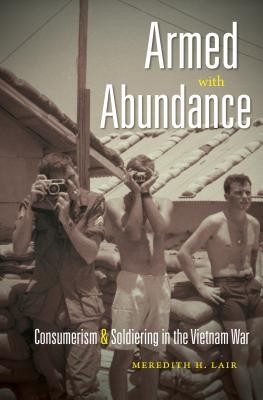
- We will send in 10–14 business days.
- Author: Meredith H Lair
- Publisher: University of North Carolina Press
- ISBN-10: 1469619032
- ISBN-13: 9781469619033
- Format: 15.5 x 23.1 x 2.3 cm, softcover
- Language: English
- SAVE -10% with code: EXTRA
Reviews
Description
Popular representations of the Vietnam War tend to emphasize violence, deprivation, and trauma. By contrast, in Armed with Abundance, Meredith Lair focuses on the noncombat experiences of U.S. soldiers in Vietnam, redrawing the landscape of the war so that swimming pools, ice cream, visits from celebrities, and other "comforts" share the frame with combat.
To address a tenuous morale situation, military authorities, Lair reveals, wielded abundance to insulate soldiers--and, by extension, the American public--from boredom and deprivation, making the project of war perhaps easier and certainly more palatable. The result was dozens of overbuilt bases in South Vietnam that grew more elaborate as the war dragged on. Relying on memoirs, military documents, and G.I. newspapers, Lair finds that consumption and satiety, rather than privation and sacrifice, defined most soldiers' Vietnam deployments. Abundance quarantined the U.S. occupation force from the impoverished people it ostensibly had come to liberate, undermining efforts to win Vietnamese "hearts and minds" and burdening veterans with disappointment that their wartime service did not measure up to public expectations. With an epilogue that finds a similar paradigm at work in Iraq, Armed with Abundance offers a unique and provocative perspective on modern American warfare.
EXTRA 10 % discount with code: EXTRA
The promotion ends in 17d.20:33:28
The discount code is valid when purchasing from 10 €. Discounts do not stack.
- Author: Meredith H Lair
- Publisher: University of North Carolina Press
- ISBN-10: 1469619032
- ISBN-13: 9781469619033
- Format: 15.5 x 23.1 x 2.3 cm, softcover
- Language: English English
Popular representations of the Vietnam War tend to emphasize violence, deprivation, and trauma. By contrast, in Armed with Abundance, Meredith Lair focuses on the noncombat experiences of U.S. soldiers in Vietnam, redrawing the landscape of the war so that swimming pools, ice cream, visits from celebrities, and other "comforts" share the frame with combat.
To address a tenuous morale situation, military authorities, Lair reveals, wielded abundance to insulate soldiers--and, by extension, the American public--from boredom and deprivation, making the project of war perhaps easier and certainly more palatable. The result was dozens of overbuilt bases in South Vietnam that grew more elaborate as the war dragged on. Relying on memoirs, military documents, and G.I. newspapers, Lair finds that consumption and satiety, rather than privation and sacrifice, defined most soldiers' Vietnam deployments. Abundance quarantined the U.S. occupation force from the impoverished people it ostensibly had come to liberate, undermining efforts to win Vietnamese "hearts and minds" and burdening veterans with disappointment that their wartime service did not measure up to public expectations. With an epilogue that finds a similar paradigm at work in Iraq, Armed with Abundance offers a unique and provocative perspective on modern American warfare.


Reviews